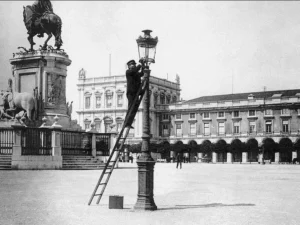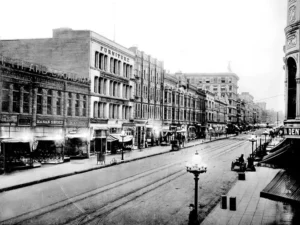Street lighting is an important symbol of modern civilization. Street lighting provides the most basic safety for our roads and cities. However, in ancient times people have been consciously using street lighting tools, such as oil lamps and candles. Over time, street lighting has evolved considerably. In this article, we will explore the evolution of street lights throughout history and today’s technological innovations.
The Evolution of Street Lights
Ancient Times
Street lamps date back to ancient times when people used oil lamps to light the streets of ancient Greece and Rome.People made lamps out of clay and soaked the wicks in oil. Ancient people placed oil lamps on poles and lit them at night to illuminate the streets.
The Middle Ages
In the Middle Ages, people used candles to light the streets. They placed candles in lanterns and hung them from poles. However, the method proved to be ineffective because the candles would burn out rapidly. As a result, the streets were often dark and dangerous, making it difficult for people to navigate at night.
The 18th Century

Evolution of street lights in the 18th century saw significant advancements. In 1736, the first gas street light was installed in London. Burning coal produces gas, and a flame emits the light inside a glass lantern. This new method of street lighting was much more effective than oil lamps and candles, and it soon spread to other cities throughout Europe.
The 19th Century

The 19th century saw further advancements in street lighting technology. Sir Humphry Davy invented the first electric arc lamp in 1802. This lamp used two carbon electrodes to create an arc of light. The first electric street light was installed in the United States in 1878, though it took until then to achieve this milestone.
The invention of the incandescent light bulb by Thomas Edison in 1879 revolutionized street lights. This new technology was much more efficient than gas and electric arc lamps, and it quickly replaced them. By the turn of the century, electric street lights were common in many cities worldwide.
The 20th Century
Throughout the 20th century, advancements in street lighting technology persisted. In the 1920s, the first mercury vapor lamps were invented. These lamps were much more efficient than the incandescent bulb and produced a bright white light. People widely use them in street lighting and other outdoor applications.
In the 1960s, the first high-pressure sodium vapor lamps were invented. These lamps were even more efficient than the mercury vapor lamp, producing a yellow-orange light. They are ideal for street lighting. They quickly became the standard for street lighting and people widely used them throughout the world.
The 21st Century

The 21st century has witnessed a remarkable transformation in street lighting technology. The advent of LED technology revolutionized the field of street lighting. With their exceptional energy efficiency and lifespan of up to 20 years, LED lights are an ideal choice for street lighting. Nowadays, LED street lights are extensively utilized worldwide. It’s due to being more efficient and cost-effective than their traditional counterparts. Producing bright, high-quality light is ideal for outdoor street lighting.
Advancements in Street Lighting Technology

Today, advances in technology have made street lighting cheaper and more efficient.
One of the most significant advancements in street lighting technology was the introduction of the photocell. A photocell is a sensor. When it senses that the amount of light drops to a value that has been set, the photocell will turn on the street light. This technology has helped to reduce energy consumption and prolong the life of street lights.
Wireless control systems are another significant advancement in street lighting technology. With the help of this system, operators can control l streetlights remotely, making it easier to turn them on and off as needed. They enable more efficient use of streetlights, lowering maintenance costs and energy consumption .Intelligent street lighting systems are another recent advancement in street lighting technology. First, sensors collect data regarding traffic and weather conditions.. Intelligent street lighting systems analyze this data and adjust street lighting levels. You can also use it to monitor the performance of streetlights, making it easier to identify and fix problems.
结论
All in all, the evolution of street lights has been a long but exciting process. The ancient oil lamps evolved into modern, efficient LED lights. As technology continues to advance, street lighting technology has given countless surprises. We eagerly anticipate witnessing further advancements in street lighting technology in the years to come.
